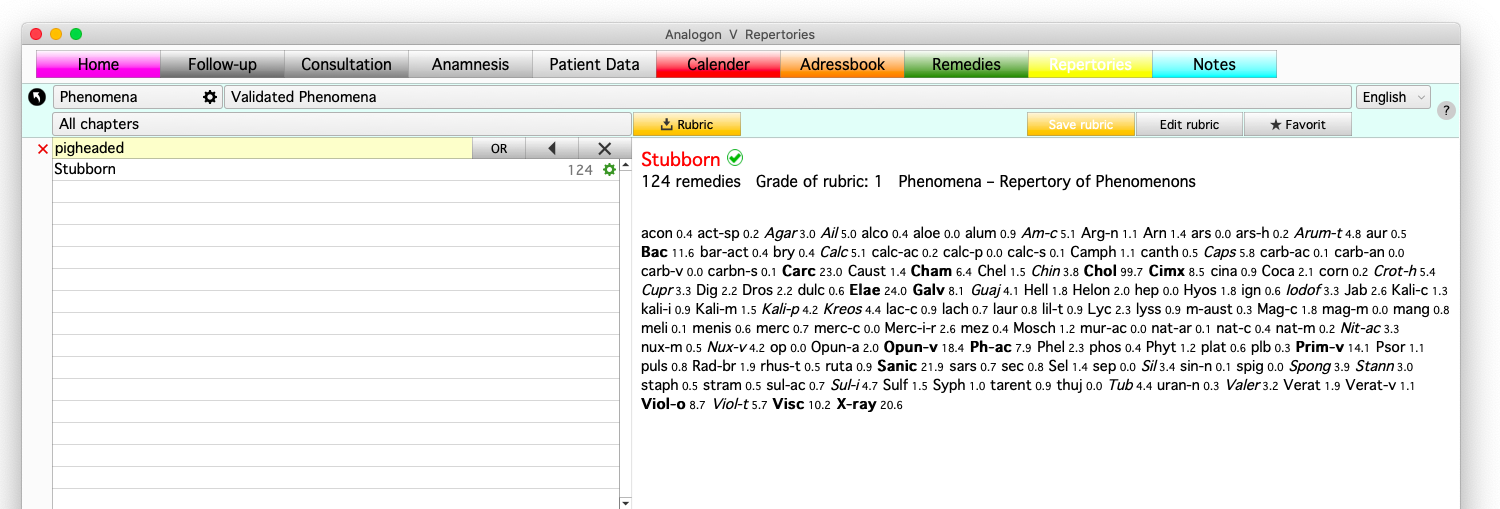Phenomena –
Case analysis with Repertory of Phenomenons
The Repertory of Phenomenons offers a new, very valid and transparent method of case analysis – always on the basis of the entire Materia medica.
The repertory no longer consists of rubrics, but of phenomena, i.e. individual terms, which can be combined with each other as desired. By taking into account all synonyms, the search for the correct phenomena is extremely intuitive. For example, the search for the terms 'dogmatic', 'headstrong', 'self-willed' etc. always leads to the phenomenon 'Stubborn'. All synonymous terms are united into one phenomenon (or one rubric), which greatly simplifies the search and work, especially in the mind chapter.
By adding further phenomena, more complex rubrics can now be formed, e.g. 'Stubbornness in children':
Each rubric formed in this way generates itself completely from the Materia medica – in this case there are 55 symptoms on which the 24 remedy entries are based. By clicking on an entry, the corresponding reference symptoms of this remedy are displayed:
In addition to the classical values of the entries, LR values (Likelihood Ratio) are calculated and displayed. The LR value is a very valid measure for the characteristic of a remedy according to §153 Organon.
Phenomena 3.0, wich comes with Analogon 6, contains an improved hierachical structure, so generalizing patient's symptoms is much better supported.
Case example
Miss A.T. had drunk too much ice-cold well water during a spell of hot weather and was now afflicted with cramps and diarrhea. I saw her two days after she returned from the country. Her symptoms were now:
Griping pains of a paroxysmal character, which compelled her to bend forward and sit down, localized in the umbilical region. Significantly better with hard pressure and the heat of a hot-water bottle. At the present time there was no diarrhea. (R.F. Rabe)
To calculate the most suitable remedy, in addition to the classical counts, the LR values are also used, which is expressed in a probability between 0 and 100% ('Bayes'). In particular, this value clearly sets Colocynthis apart from all other remedies here.
When forming rubrics (by combining single phenomena), it usually makes sense not to make them too specific. In particular, modalities should be included as separate rubrics in the repertorization, following Boenninghausen, since these are often listed in a generalizing manner in the Materia medica, and not specifically for each symptom.
To compare the symptomatology in the wording, the reference symptoms can also be displayed within the repertorization by clicking on the respective remedy.
Watch the video tutorial for to see how Phenomena works in practice.



